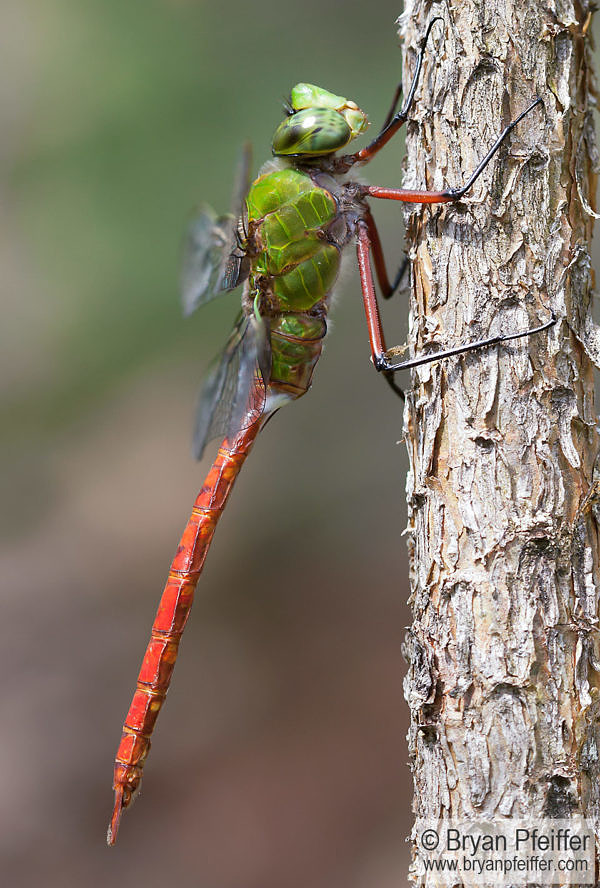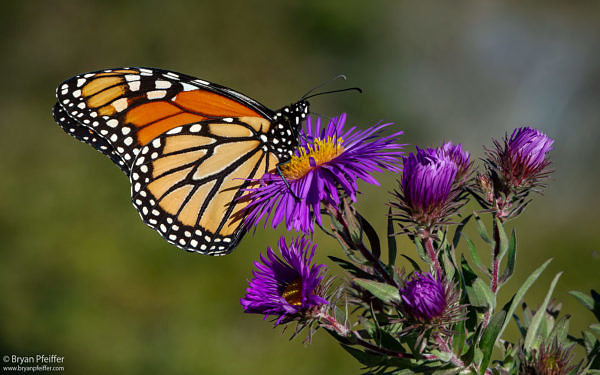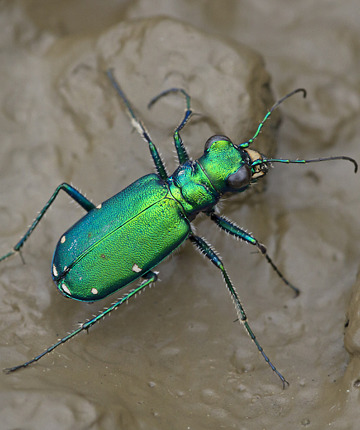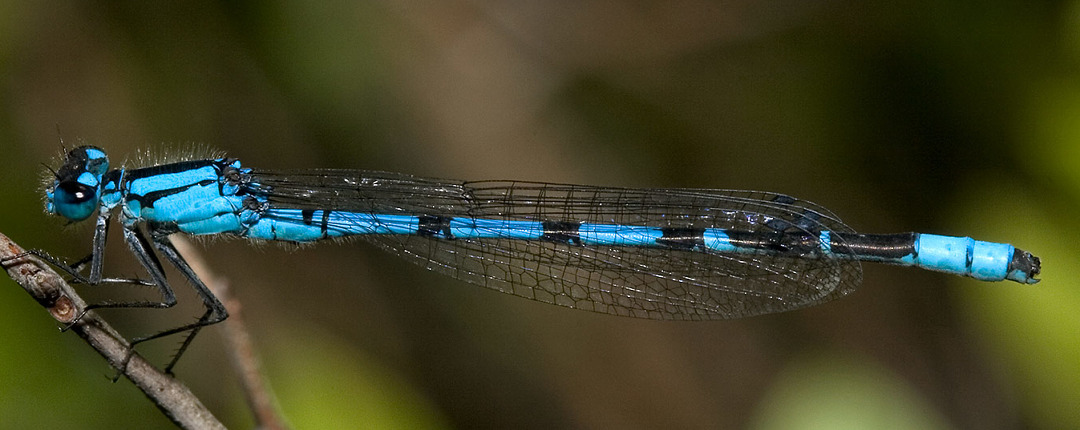Extinction and other Matters of Life and Death and Insects
Perspective on the "Insect Apocalypse"
At the start of our discussion about the fate of insects last week, Vermont Public Radio host Jane Lindholm asked me if we were indeed in the Sixth Mass Extinction.
One thing is certain, I replied: If we’re in the Sixth Extinction, insects will most certainly survive it. As for us? Well … not so much.
The worthy fate of earth’s insects has burst into the news lately, notably with Brooke Jarvis’ perceptive The Insect Apocalypse is Here in The New York Times and, more recently, alarming news coverage of a review paper warning of outright insect extinction and the “collapse of nature.”
Now comes some parsing and the nuance. First, I can say with the hindsight of 400 million years of history that we humans will be gone from this earth long before insects depart. They have already survived five mass extinctions. Toxic gases, horrific heat, volcanic eruptions, meteor strikes and even human beings and our abuses are no match for millions years of insect evolution by means of natural selection. To insects, the dinosaurs were a passing fad. So are we.
This by no means absolves us from what we’re doing: wiping out insects at an alarming rate with little remorse. That we so easily kill off these durable animals is less an indictment of their survival skills than a demonstration of our deadly ways.
Yet decline and extinction in nature are rarely simple matters. Diverse and versatile, insect defy headlines and simple explanations. The planet has about 10,000 bird species, for example; ants alone number at about 12,000 species. My home state of Vermont has about 200 breeding bird species and more than ten times as many moth species. Bees? We’ve got about 4,000 species in North America. Some are fine, some are imperiled, some are on the verge of oblivion, and some have yet to be discovered.
Insects pollinate about 80 percent of our wild plants and lots of our crops, they are food for about 60 percent of our birds, and they move nutrients through the food chain like few other organisms. Our rainbow of lovely warblers cannot eat the leaves and needles from our trees. Instead, insects eat those leaves and needles, and then become food for the warblers. So if you want songbirds in your forests, you had better protect the insects in your maples and oaks, your spruces and firs.
But we are not protecting them. We are killing them. I myself look at the problem from three angles (each with a political overlay): global, local and personal. And this not only concerns the finality of extinction, which so few of us ever actually witness; this is also a decline in abundance, a troubling loss of biomass: fewer insects, fewer birds, fewer pollinators, no more “moth snowstorms.”
Globally, the rise of agriculture is a well known perpetrator. Lots of the studies on insect decline point to agriculture and pesticides as proximate and powerful. Agriculture brings on monocultures that lack diversity. Yeah, we all gotta eat. And we can be buoyed by the localvore movement and organic farming and other good trends in growing food. But absent some massive rethinking of how we eat (notably meat and soybeans and their related deforestation, among other crops) on the scale of what’s necessary to curb the climate disaster, agriculture will remain a major culprit in global insect decline. That’s unlikely to change.
Locally or regionally, sure, we might enact policies to protect insects and their vital roles in our lives and economies, notably as pollinators. These might include bans on neonicotinoids, a class of insecticides particularly toxic to insects, especially bees. Yet we all too often cling to the simple fixes, such as a link between GMO crops and Monarch decline. Remember: insects are rarely simple. New research suggests that Monarch population decline began long before the advent of GMO crops. No easy answers.
Personally, we can do lots of things to promote insect diversity in your own backyards, not the least of which is to reduce or stop all the mowing. Not only are lawns relative insect wastelands, so much of the other mowing we do, along roadsides and in public parks, diminishes insect diversity.
So, yes, by all means, increase the plant diversity in your world wherever you can. Insects will be all the better for it. Mow less lawn. Plant more milkweed. Grow oaks, which host more insects than maples. Join the Xerces Society. But have no illusion that you are saving the insects. They and their troubles are far greater than the likes of you — that is unless you, as a member and co-conspirator, can bring on a reversal in the Anthropocene and this Sixth Mass Extinction.
Even so, this somber perspective does not mean we should stop trying our best to live with nature. I ended our discussion on Vermont Public Radio with a plea for you to get to know an insect or two close to home. Watch for the Rosy Maple Moths coming your way this spring. Visit with the Six-spotted Tiger Beetles killing hunting down tiny insects near your garden. Sit with the bluet damselflies beside your pond. And read among the best books yet written on this subject: The Moth Snowstorm by Michael McCarthy.
After all, along with all the killing we do, ironically, our drive to discover and love life in nature is intrinsically and wonderfully human. We know, therefore we care. And when we care, we act.








An excellent, thought provoking article Bryan.
Thanks very much, Bernie, for the words of hope. I’m mostly not as hopeful. I’m current writing on a similar topic — mostly as it relates to birders and birding and climate. But I’m also hopeful that I’m wrong! 🙂
Thanks, Eloise. I see so many of those heartbreaking 10-acre lawns. Even if we can get homeowners to mow paths through them, instead of making them “golf courses” where there will never be golf (or much more than anything but more mowing), think of how we might diversify things. Lots of work to do. A white paper is in the works!
Thanks for this perspective, Steve. Yes, we do indeed reign outsized thunder on the planet. And, yeah, insects can indeed show resilience. I like the idea how they’ve diversified here in Vermont even in the last 150 years, since the state become reforested after being basically clear-cut for agriculture.
Give a guy a hammer, and everything starts to look like a nail.
Give a guy a mower, and, well, insects die.
I’m so sorry to hear this, Ann. And I hear it all too often. It happens where my mother lives, where they mow most anything wild. And the irony in so many of these little communities is that they are named for the places destroyed in their construction: Maple Place Villas, Lange Farm, and countless others. At a pond near my mother’s home, the city weed-whacked all the pondside vegetation EXCEPT for the purple loosestrife. So we have work to do.
I think we have to make it “fashionable” to have shaggy lawns, and repeal the laws (they are real in some places) where you can be fined if you don’t move regularly. The ads showing children playing on lawns that have been treated with weed killers to make them look like golf courses are terrifying. Those chemicals have as much or more long range impact on humans than on the bugs and “weeds.” What’s wrong with dandelions? What parent hasn’t been delighted by a child’s gift of a dandelion bouquet? Let’s support meadow diversity in lieu of lawn perfection. As for the insect apocalypse, the good news is that insect populations can recover quickly if the underlying cause of their decline is mitigated. This is an excellent article, Bryan! Thanks.
Since the advent of the lawn tractor lots of the people who have moved to “the country” (which is actually just glorified suburbia) seem to want to play “farmer” and engage in what a friend of mine has described as recreational mowing. They need to get a life and find something more socially and ecologically useful to do with their time.
Hi Bryan: I am on the Green Committee at Rivermead in Peterborough NH. On one of my fall walks I stopped by a patch of old grass, black-eyed susans, moss and old gray goldenrod and timothy. Flies, little bees and several twelve-spotted dragonflies were exploring lazily around in September sunlight.
I had my camera with me so I stood perfectly still and waited for one of them to light on a stalk of timothy. I got a couple of shots then it flew off, did some circles and came back lighting this time on yellowed- gray goldenrod. It was curious about me. We communicated a little, I took more photos and we parted ways. I said I’d be back.
When I did three days later the entire patch had been cut right down to dirt and chopped up moss by the worse of all field machines, a bushhog. Everything was gone.
Several members of The Green Committee at Rivermead have been working tirelessly to save some of our natural areas. Rivermead uses a lawn care business that uses chemicals on the lawns and the expansive grass areas are cut sometimes twice a week. I am hoping by next growing season the little patch will come back and we can persuade the keepers of the lawn to let at the very least the little hidden away corners of Rivermead grow wild.
A great article Bryan. I often use the same example you use about insects surviving past mass extinctions. Of course, so did our ancestors, but the insects are unique. They survived as insects and our ancestors were vertebrates, fish, amphibians, reptiles, and finally mammals. I note that dragonflies and damselflies survived at least 4 of the past extinctions and remained dragonflies and damselflies. Insects seem to be evolution’s true success story and I find it disturbing that a single species, humans, are the cause of such disruptions of nature. If life on this planet survives us some insects will too and eventually they will evolve the diversity they had before we showed up.
Bryan, nothing is simple, yet that does not excuse inaction. Nothing is certain (well almost nothing ) – no reason to give up to possible doom – for even one insect species, or for the biomass of nature’s bio diverse life forms including our own.
I hope (one of) the message folks take away from your important article is that we can all do something to help, something to lessen our negative impacts. As you suggest we can learn about our non human neighbors most of which we are oblivious to. We care more for that and those we know.
We as individuals can demonstrate our caring as you suggest in easy steps like mowing less, planting NATIVE plants for our local pollinators… And reap the rewards from these actions as well as to aid nature.
Each our own individual behavior, I believe, has an impact for better or worse. Humans have drastically reduced their barbaric behaviour towards each other over over the millenia. Many our our cruel painful and deadly ways (towards each other) once commonly accepted and practiced are no longer so.
Now we can emulate that change with empathy, self control, goal oriented actions, morality, and reason – with openness to ideas of caring for this planet and all life on it. We are but one of a multitude.
Let us set a goal of getting to know our nature neighbors better, appreciate their value equal to our own.
Yes, we need process changes on a grand level. Those changes can start with each of us individually choosing how to help – eat less meat, mow less lawn, grow more native plants…. pick and choose, but do something and promote caring for nature as we do for our own species.
Here is a link to my posting “Creating Pollinator Gardens – Let’s Go Native”, for folks looking for ideas in that realm. https://jerichovermont.blogspot.com/2019/01/creating-pollinator-gardens-lets-go.html
Keep leading and enlightening us Bryan, (awareness of other life forms unlike ourselves)
your light is attracting more than moths;
may we shine through our sharing and caring
with our fellow life forms.
Bernie
https://jerichovermont.blogspot.com/2019/01/creating-pollinator-gardens-lets-go.html
Hi Robert, Yes, this is a big problem. We’ve got so many giant lawns that only get visited while the homeowners are out on riding mowers. If I can find more time, I’ll be working on a policy document on mowing and public lands. Even the good folks at the Middlebury Bread Loaf Writers’ Conferences (which includes an eco-writing conference) mow so much lawn: http://www.middlebury.edu/bread-loaf-conferences. Letting more of that go wild can offer localized habitat for insects and other wildlife.
Hope to see you in FL!
Yes, I steal from Pyle all the time. 🙂 He’s okay with it, telling me that at least I cite him. Too many others don’t.
Thanks, Dru! That means a lot to me. We’ll come by again to enjoy insects with you next time!
We’re working on a white paper on mowing. Keep “bugging” me about it. (We’re behind schedule — so much to do.)
Thanks, Stephie! Nature, intelligence, parsing and nuance — all sort of endangered species these days.
Thanks, Marie. Yes, the Moth Snowstorm — it’ll make you weep.
Excellent, Bryan. And thank you for the book suggestion.
Yes, really appreciate your parsing and nuance!
Thank you, Bryan. I sent this on to my condo board. I’m hoping to convince them to leave one grassy slope alone and mow it only once every three years. Loved your insect “eye-candy” as usual.
Hi Bryan,
You know I am not a fan of the insect world, but I enjoy your writing so much, I read every word. You make a convincing case. I’ll plant more milkweed!
Well done Bryan. Your final comment reminds me of what Robert Michael Pyle once said about knowledge preceding caring preceding action. It was in reference to his concern about the decline in interest in natural history. Whither the naturalists indeed!
Great article.
New York State has a ecological hostile practice of destroying as much land as possible to create public facilities. For example, a simple rest stop along the highway might have a 1/2 mile driveway leading to and from the building and paved parking lot that is big enough to host a football game (parking spaces that are never filled!). Acres and acres of mowed lawn surround the rest stop. These rest stops are ridiculously expensive to build and maintain, and effectively leave the wildlife homeless.
I discussed this in a letter to the editor of our newspaper and contacted a state senator from our area, but more voices are needed.